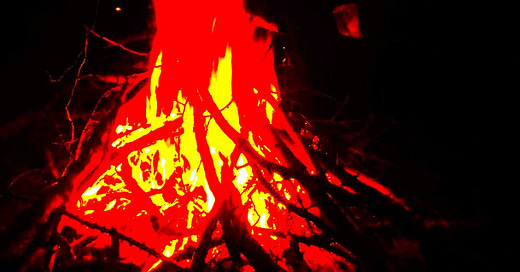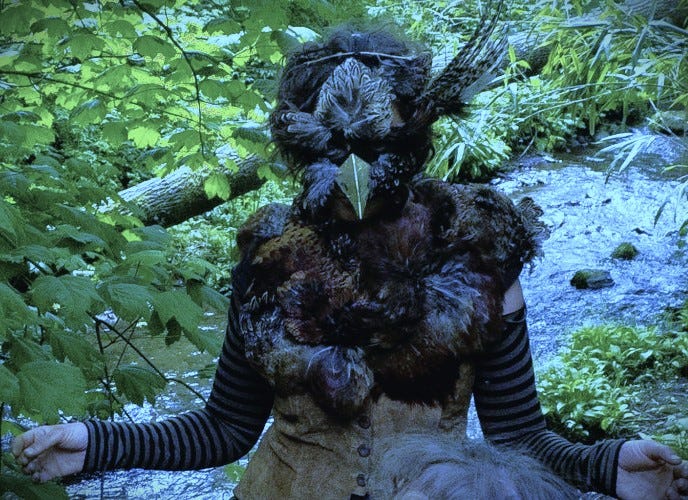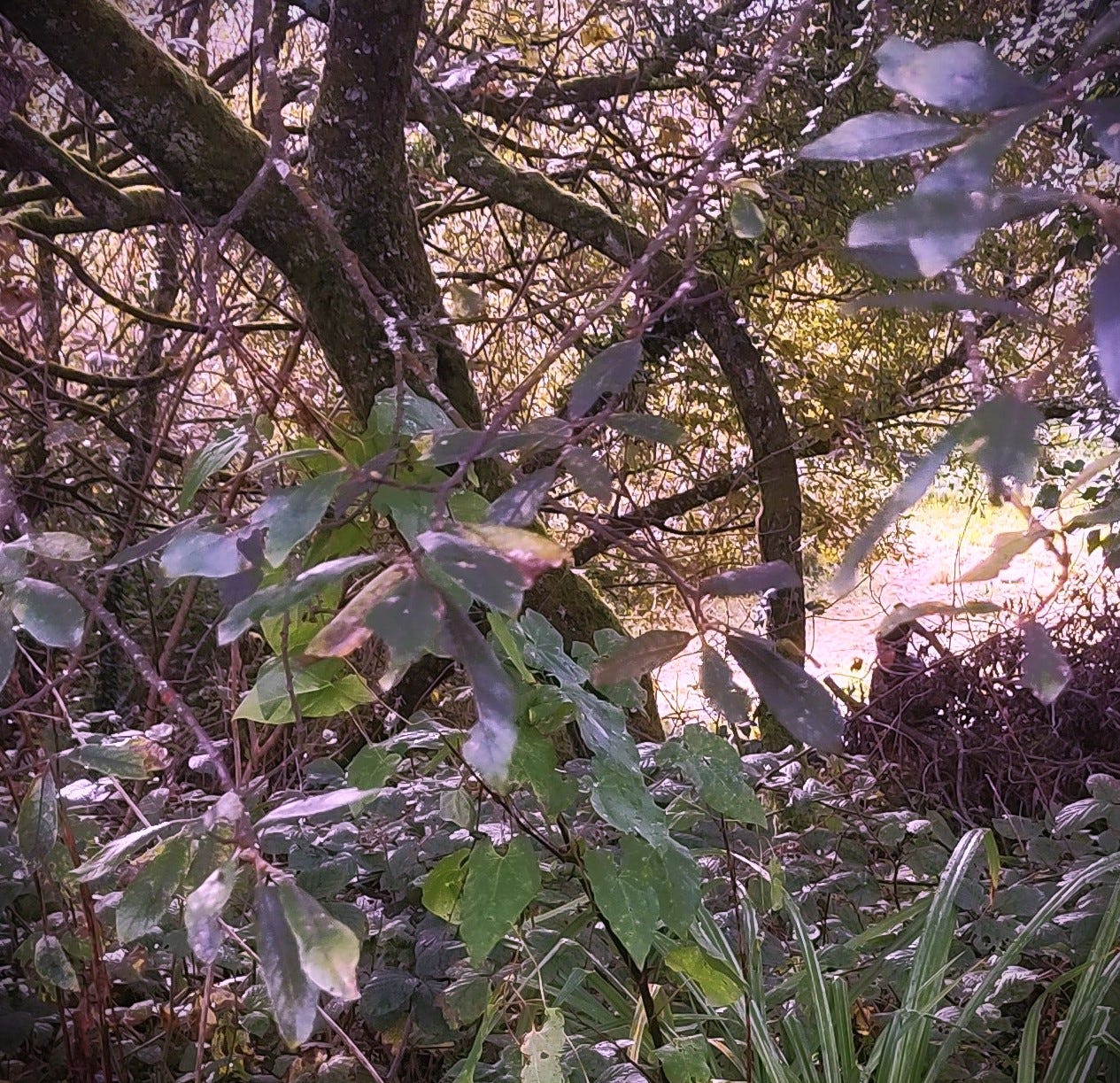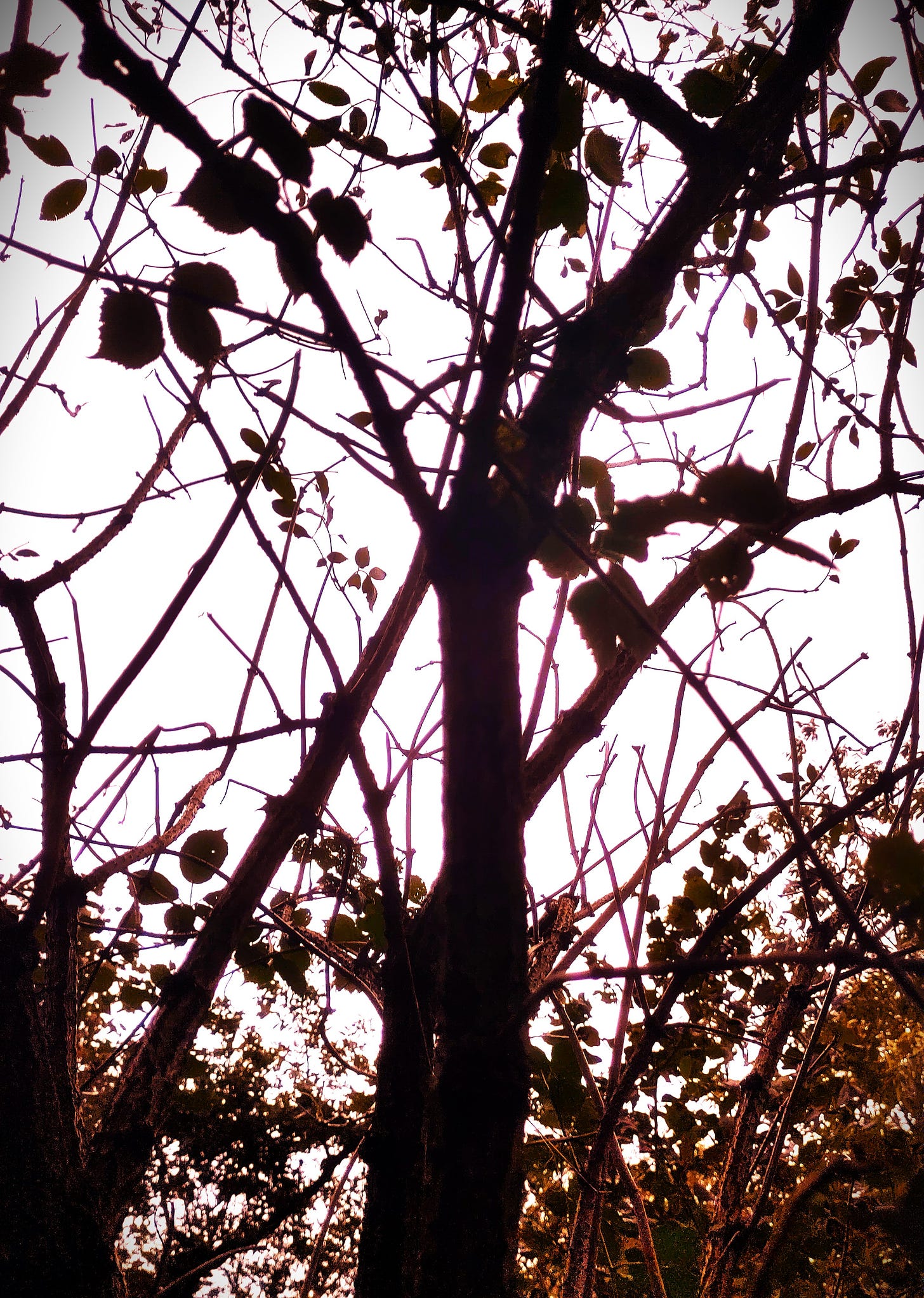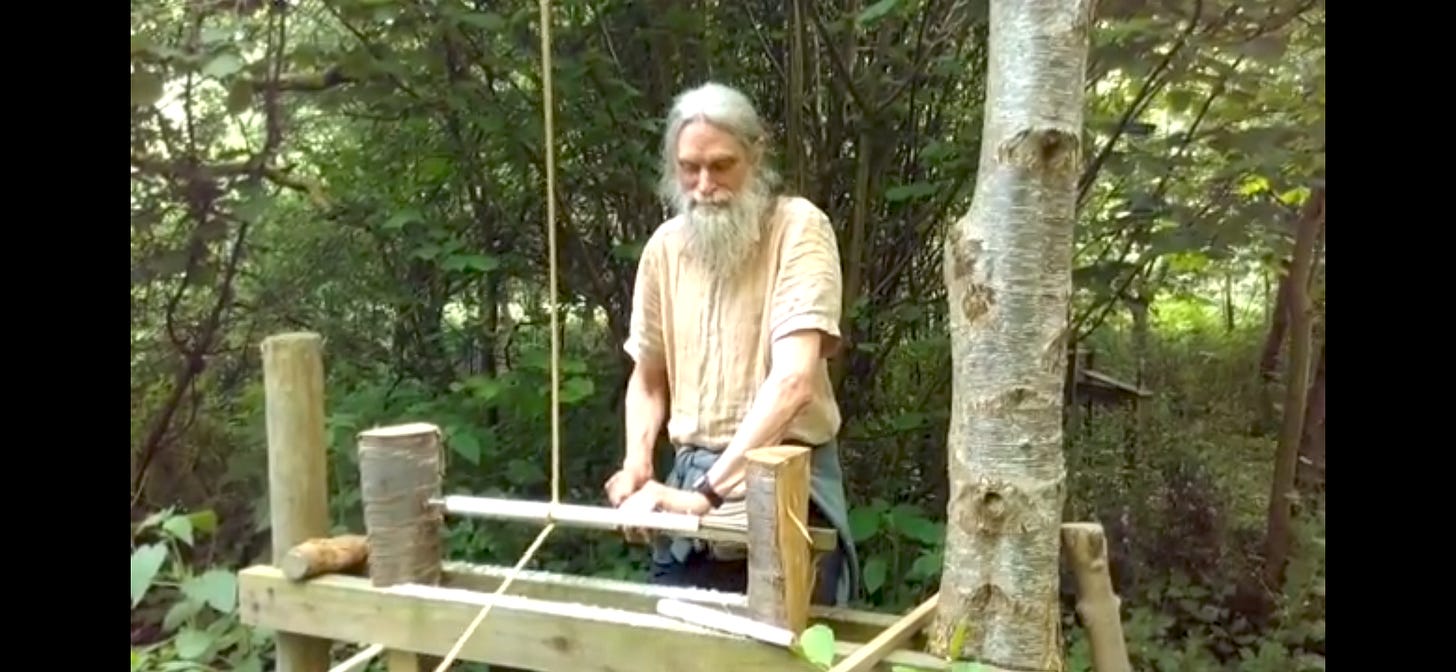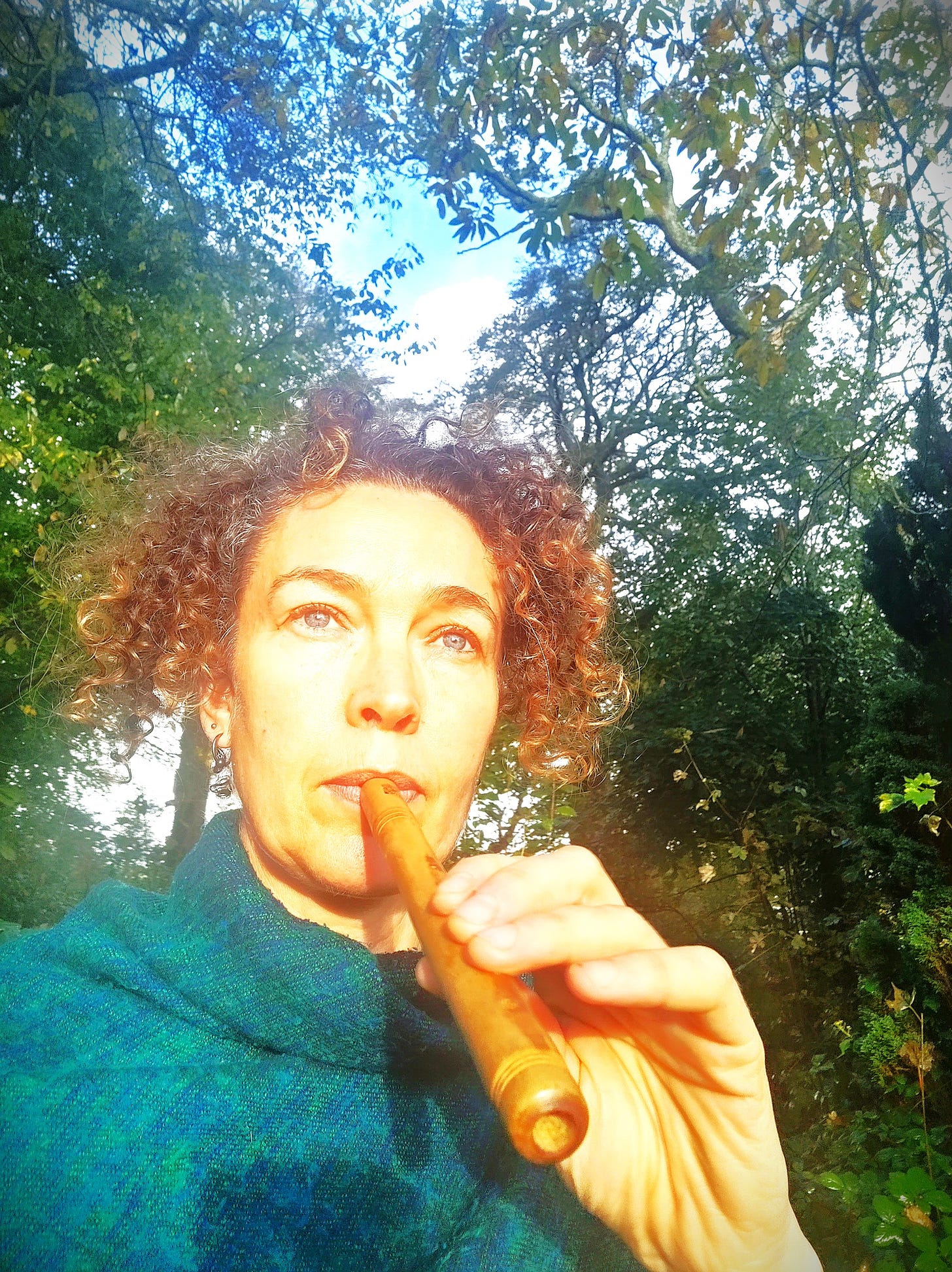The Solar Year wanes into the deeper darkness; leaves die and fall like golden rain, mushrooms bloom bright through leaf mulch, twig-claws reach from hedges and storm winds howl like unquiet souls. Now all Nature reminds us of death…
So, on All Hallows Eve- Hallowe’en- the spirits of the dead are still remembered- and there is a spine-shiver of fear in the air for the Wild is calling out to one and all, from the shadows.
In a Street near you, as night falls, figures move house to house, and some make the most of trick or treat to recall stories of death and darkness, some make unhuman calls back through the Night to the Wild: howling werewolves, cackling witches, growling demons, bloodthirsty baying beasts and wailing spirits; costumed people, out after dark- Wildlanders for the night.
The idea of taking wild and otherworldly guises comes from more ancient times, when the celebrations were red in tooth and claw; It is no coincidence that Samhain (pronounced Sow-wen)- the Celtic Festival of the Ancestors- falls on the same night as Hallowe’en and that the Celts invented this tradition of costumes- to trick the dead.
Ancestor spirits were honoured by the Celts throughout the year but this was a special time to remember them. At Samhain, it was said that the “veil between the worlds of the living and the dead was thin” so the tribe came together to travel through this night; they drove the winter herd of cattle between fires, slaughtered animals for the feasting and curing and lit bone-fires with their remains (which gives us the name bonfires today). These bones were part of sacred offerings to the Earth and the Ancestor Spirits to invoke protection and prosperity, bringing safe passage through the trials of Winter and though another solar year. The Bone-ash, full of vital minerals would feed and honour the Earth- life-giver and death-bringer.
People would give thanks and call on the Ancestor Spirits for their help during the following year. At the same time there was also a certain fear- that if a spirit caught sight of one whom they had loved- or even hated- in Life, they might try to drag them back with them. through the veil and into the Otherworld, before their time.
So began the Celtic tradition of dressing in disguises at Samhain- they wore the skins of the animals they had slaughtered over their bodies and animal skulls or masks of birds or beasts on their heads. Such guises were to honour the ancestor spirits, also to intimidate them, so they dared not touch them, but it was also hoped that the disguises would trick the spirits so they would not recognise anyone there and none would be taken back through the veil, by a loving or vengeful spirit.
In a different way, Christians feared the restless souls of the unshriven sinners on this Eve of the Festival of All Hallows Day, thinking they would be out causing dark mischief before the Day of All Hallows- All Saints- when they were banished back to the hole they came from. So they learnt from older festivals of the dead, such as Samhain, that the Wild Ones- never buried in holy ground- should also be remembered. Forget them at your peril… for on a howling stormy night- few doubted that they were there in the Wild Shadows of Hedge and Grove and Sacred Stone.
European Folklore reflects many of the old beliefs in Animism- the imminence of spirit in all things- which were carried over in many different ways into Christian times. In Animism, Wild Places were inhabited by elemental spirits of place- such as fair folk, pixies, gnomes, giants and sprites of all kinds- but also by the Spirits of the Dead. Having left their bodies their spirits could find a new dwelling in or near their burial place and of course at times they might wander.
In these ancient European Tales, the spirits of loved ones, dwelt most often in Trees and are more likely to take benevolent care of the Living, than grab their souls away into the Otherworld.
In ‘The Juniper Tree’ a story collected by The brothers Grimm, the good Mother of a boy is buried under the tree. The boy is murdered horribly by his malevolent step-mother and his loving step-sister buries his bones with his Mother’s Tree.
“…she laid the bones in the green grass under the juniper tree, and she had no sooner done so, then all her sadness seemed to leave her, and she wept no more. And now the juniper-tree began to move, and the branches waved backwards and forwards, first away from one another, and then together again, as it might be someone clapping their hands for joy. After this a mist came round the tree, and in the midst of it there was a burning as of fire, and out of the fire there flew a beautiful bird, that rose high into the air, singing magnificently, and when it could no more be seen, the juniper-tree stood there as before, and the silk handkerchief and the bones were gone.
Little Marleen now felt as lighthearted and happy as if her brother were still alive, and she went back to the house and sat down cheerfully to the table and ate.
The bird flew away and alighted on the house of a goldsmith and began to sing:
'My mother killed her little son; My father grieved when I was gone; My sister loved me best of all; She laid her kerchief over me, And took my bones that they might lie Underneath the juniper-tree Kywitt, Kywitt, what a beautiful bird am I!'“
Hedge-witch, Giver of Wild Medicine
The Witches are long revered in the Shamanic Beliefs of Celts and Germanic peoples as Wise Wildlanders, keepers of the ancient knowledge and intermediaries with the ancestor and elemental spirits. The source of their wisdom and healing knowledge was in the Wild Places surrounding their home.
The oldest tales show the witches as shamanically attuned to their environment, respecting and building relationships with plant and animal allies for healing. They find super-sensory powers from communing with certain trees and plants and sometimes they became permanently attached to their allies. Their incantations could be harmonic Calls to the Wild- asking the spirit of the plants to help with making the Cure.
In earlier centuries of Christian Belief, the Witches kept their place in the community as healers and the Elements of Nature were still seen as housing divine spirits.
Below is an excerpt from my recording of a cautionary tale- ‘The Elder Mother’ which I adapted from a British Folk Tale.
It gives a glimpse of one way certain sacred trees became revered- in this case through their witch-associates. It also tells how woe would betide anyone who damaged them…
Click on the audio link and then it will take you to the online newsletter where you need to click again.
The full recording of this magical Folk-tale is available to paid subscribers below.
A Greenwood-worker and an Elder Whistle
Celtic Pipes and whistles make haunting tones and the tunes they played were often attributed to the fairies themselves. (The Tale of O’Carolan is one for another day) And throughout the world from the Andes to the plains of North America to the pan pipes of Greece, wind instruments are used to call to the Wild Earth and charm the spirits which dwell there.
There is a Pixie Tale from Dartmoor which I have adapted, called “Tom Turner and the Elder Whistle”.
Tom Turner is a Green-woodsman who has his workshop among the trees- he works in wind and weather and so grows wiry and worn like an old tree himself…
His pole-lathe and saw-horse are simply fashioned from the wood he finds around him. He walks gently among the living trees, and, like the Hedge-witch, he attunes to the diverse life around him; the calls of the birds have meaning, the trees are chosen with respect and cut in harmony with the ever growing, changing web of life, in the wood.
One day, whilst working, Tom hears strange music. Following his ears, he comes to a green sward where he spies some little folk, as high as my knee, with pointy ears and noses and straight-up-in-the-air hair- the pixies- dancing here and there and everywhere; they dance to the music of a pixie whistler. When he goes home that night he tells his Wife that Pixie’s are for real- as he had always said- because he had seen them dancing, but she does not believe him so he decides to make an Elder Whistle, hoping to call them to him and show her…
“Of course Tom knew just the tree he needed to visit- along the woodland edge he went until he came to a jiggedy, jaggedy Elder Tree; then he asked,
“Elder Tree, Elder Tree, Let me take a branch from thee
When I’m dead a tree will grow from me.”
In those days people showed special respect to elder trees for they said the ghosts of witches sometimes lived in them.
Well, the elder tree whispered back,
“Yesss you may!”
So, Tom cut a little branch and set to work. The middle of the branch was easy to push out for it was a soft pith and the wood was easy to turn, then skillfully with his woodsman’s hands he carved the mouthpiece and holes to make the notes with his fingers, until he had made a little whistle.
Then he began to play… and it sounded terrible enough to scare all the pixies away.
But Tom was not one to give up easily, so each day he sat in the wood and he played and into the long cold winter nights he played, beside the fire until.
“That darn whistle is half-way sounding sweet now, Tom!” Beth said one evening.
“Sweet enough to catch a Pixie, I reckon!” he muttered and Beth laughed at him.
It was a fine evening in Spring when Tom was working in the woods, he decided to try and find the spot where he had seen the Pixies the year before on his way home. Carrying his lidded lunch basket he made his way along the winding paths to the little island of soft grass where the three streams met. He sat upon a tussock and took the whistle out to see if he could call the Pixies. He played the song of the woods- of tall trees and the deep roots, of softest moss and little shoots.
He played that elder whistle so sweetly that sure enough, little faces with pointy ears and noses and straight-up-in-the-air hair, peeped out from under root and rock and one by one they came out to dance. Soon those Pixies were dancing round and round, hoppity skippity ay, and as they danced, the curled-up ferns all around, began unfurling, before Tom’s eyes.
What a sight what a sound…
Twas then Tom had an idea, but it wasn’t one of his best… ”
I find that Stories have a way of inspiring daily life and this was the way I received my own Elder Whistle. In the early 2000s I met a real-life Wildlander, who, like Tom Turner in my Story, was a Greenwood-worker.
I met Andrew Barkla when he invited me to make a series of visits to tell Wild Tales with a group at the Mental Health Charity, ‘Mind’, in Exeter. He had a gentle and grounded air and a glint of the Wild in his eye. During one of my visits, the group decamped to a “Greenwood Project” site, out of the City, where Andrew got the whole group beautifully involved with the Greenwood experience.
That day I told the Story which later became “Tom Turner and the Elder Whistle”.
Andrew went away and respectfully asked an Elder for a little branch; he cut it and pushed out the pith, turned it on the pole-lathe, carved finger holes and mouth piece and gave the whistle to me next time I came to the group. It makes an edgy sound- enough to Call the Pixies perhaps…
Over the years Andrew and the “Greenwood Project” Community, created many opportunities for people to connect with the woods. The Project is now wound down, but their leaflet explains more about what they achieved.
"This Project provided access to the physical and mental health benefits of being in woodland and other outdoor environments. It also provided a chance to learn about traditional woodland crafts. We found that making meals and cooking on our own fire in a woodland clearing, telling stories and making music under the stars and making things by hand from natural materials we collected ourselves, all allowed us to see and experience life in a new healing way. It helped us to appreciate and fully value the natural world. We met in a number of venues around the Devon countryside."
Andrew is still a Green-woodsman and a Wildlander through and through…
Coming Next week… Rise of the Tuskellen Chapter 6 , The Oath of Grimm. Excerpt for free subscribers- Full Chapter for paid Subscribers.
Keep reading with a 7-day free trial
Subscribe to Wildlanders to keep reading this post and get 7 days of free access to the full post archives.

